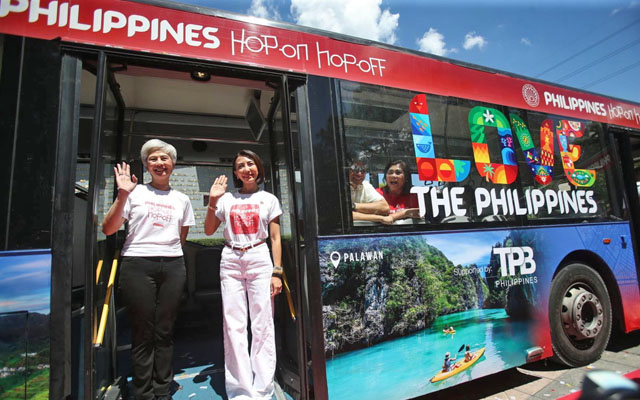Just How Transportation Advertising Can Change Mass Transit Spaces Into Dynamic Advertising Platforms
Transit advertising and marketing holds considerable possibility to redefine mass transit areas into lively advertising platforms that inform and engage. By making use of ingenious styles such as digital display screens and interactive kiosks, brands can not just get to a varied audience yet additionally improve the total traveler experience. This strategy develops a special possibility for brands to attach with customers in a setting that is typically ignored. As we discover the multifaceted benefits and evolving techniques of transit advertising, it increases the concern of just how this improvement might redefine our communications with both brand names and the urban atmosphere.
Benefits of Transportation Advertising

Furthermore, transportation advertising and marketing is highly affordable contrasted to traditional media. It allows marketers to accomplish high impacts at reduced expenses, taking full advantage of return on investment. The captive target market of travelers gives a chance for brand names to convey their messages to individuals that are frequently responsive throughout their travel times.
In addition, the dynamic nature of transit marketing permits projects to be upgraded regularly, making certain that messaging continues to be timely and relevant. This versatility can be critical in reacting to market fads or advertising occasions, keeping the brand name top-of-mind for customers. Finally, the pervasive presence of transit advertising and marketing contributes to brand recall; duplicated direct exposure within acquainted traveling contexts reinforces brand recognition and fosters consumer commitment, eventually driving sales and enhancing brand track record.
Kinds Of Transit Advertising
Public transportation systems supply numerous layouts for marketing, each dealing with different advertising methods and audience engagement methods. One prominent type is exterior bus and train wraps, which cover the entire automobile and produce a mobile signboard impact, allowing for high visibility in urban atmospheres. These wraps can capture attention as they pass through busy streets, getting to a diverse target market.
Another preferred layout is interior marketing, which includes posters, digital displays, and ads on transportation seats. These placements involve guests throughout their journey, enhancing brand messaging in a confined space. Digital shows, specifically, use the advantage of dynamic web content, enabling marketers to update messages in real-time.
Terminal advertising and marketing is additionally significant, featuring posters, banners, and interactive stands within transportation terminals. These advertisements leverage foot web traffic and can target details demographics based upon location.
Lastly, advertising collaborations with transportation authorities can cause unique projects, such as themed transit experiences or occasions, enhancing the general engagement with travelers. Each kind of transportation advertising offers unique benefits, allowing brand names to customize their strategy to successfully reach their target audience within the general public transportation ecological community.
Involving Travelers Successfully
Travelers are progressively inundated with advertising messages throughout their day-to-day trips, making it crucial for brand names to involve them in ingenious methods. To catch focus in this crowded room, advertisers have to focus on creativity and relevance. Using appealing visuals and succinct messaging can substantially boost the probability of interaction.
Interactive aspects, such as QR codes or enhanced fact functions, can additionally transform fixed ads into immersive experiences, promoting a deeper link with the target market. Brand names need to focus on dealing with commuters' passions and requirements, tailoring messages to resonate with their way of living, whether with promotions for neighborhood services or services designed to improve their commuting experience.
Moreover, timing plays a vital function; purposefully positioning advertisements throughout peak travelling hours can optimize visibility and effect. Involving commuters efficiently additionally entails leveraging social networks integration, permitting guests to share their promotions or experiences directly from transportation platforms, thereby amplifying brand reach.
Basically, reliable interaction rests on recognizing the commuter trip and developing engaging, interactive, and appropriate marketing experiences that not only record interest but also drive action and loyalty. By doing so, brand view publisher site names can change public transportation right into a vibrant advertising system that resonates with its target market.

Measuring Advertising And Marketing Influence
Just how can brands accurately analyze the performance of their ad campaign en route settings? Measuring the influence of transportation advertising and marketing calls for a multifaceted method that integrates qualitative and measurable metrics. One widespread approach is tracking interaction via mobile analytics, where brand names can evaluate foot web traffic patterns and application communications previously, during, and after projects.
Studies can supply important insights into brand recall and customer sentiment, allowing brand names to determine exactly how well their messages resonate with travelers. Furthermore, go to website checking social networks engagement pertaining to specific campaigns can reveal shifts in public assumption and brand name conversation.

Additionally, working together with transportation companies can improve dimension accuracy, as they frequently possess in-depth group data on ridership trends. By integrating these methodologies, brand names can create an extensive understanding of their advertising efficiency, ensuring that their campaigns not just get to but also influence their target audiences efficiently.
Future Patterns en route Marketing
A considerable shift is expected en route marketing as technological developments and changing customer habits improve the landscape. Transit Advertising Philippines. The assimilation of electronic display screens and multimedias is expected to enhance interaction, allowing brand names to supply vibrant content that resonates with varied target markets. As mass transit systems embrace wise modern technology, marketers will certainly utilize real-time data analytics to tailor messages based on traveler demographics and behaviors
In addition, increased reality (AR) is positioned to change the means travelers engage with promotions. By giving immersive experiences, AR can change an ordinary journey into an engaging story that catches interest and fosters brand commitment. This innovation will likely urge marketers to create even more experiential campaigns that drive customer communication.
Sustainability is an additional critical pattern affecting transportation advertising and marketing. As environmental consciousness grows, brands will progressively look for to line up with a fantastic read green practices, using sustainable products and advertising environment-friendly campaigns within their projects.
Conclusion
Finally, transit advertising supplies significant advantages by enhancing brand exposure and involving a restricted audience. With various formats, such as exterior wraps and digital screens, it transforms mass transit right into a lively advertising system. Efficient involvement approaches and durable dimension strategies even more magnify its influence. As fads advance, the possibility for innovative communications in between travelers and brands is poised to grow, making certain that transit advertising stays a crucial component of contemporary advertising and marketing approaches.
Transportation advertising and marketing holds substantial possibility to redefine public transportation spaces right into vibrant marketing systems that notify and engage. The pervasive visibility of transportation advertising and marketing contributes to brand recall; repeated exposure within familiar traveling contexts reinforces brand awareness and cultivates customer loyalty, ultimately driving sales and enhancing brand reputation.
Exactly how can brands accurately analyze the efficiency of their advertising and marketing projects in transportation environments?In conclusion, transportation advertising uses considerable benefits by boosting brand name presence and involving a captive target market. Transit Advertising Philippines. As patterns advance, the potential for ingenious communications between brands and travelers is positioned to expand, making certain that transportation advertising and marketing continues to be an important component of modern-day advertising approaches